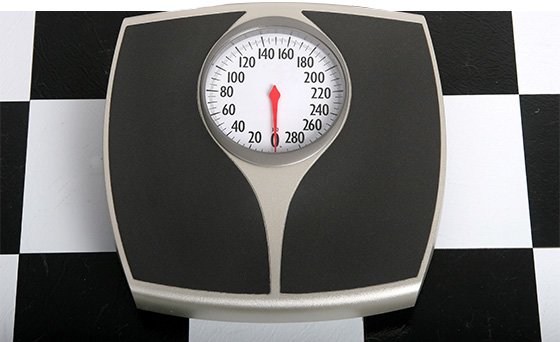You counted down the days, swore off bad habits, watched the needle on the scale steadily drop, and reached your weight-loss goal. Go ahead, take that sigh of relief—you earned it! After weeks of fending off cravings, withstanding hunger pangs, and pre-packing healthy meals, your hard work paid off.
Now what? The first thing crossing your mind might be, "Let's eat!"—namely the greasy, fried, overly sweetened foods you banished for months. You can certainly loosen the reins a bit, but not too much. Otherwise, your transformation may be for naught. Not only do you risk regaining the weight, but you also put your health at risk.
Not sure how to transition from a strict diet to a maintenance plan? No problem. Ease into daily, healthy eating with these six tips to help you make a smooth transition to healthy, maintenance-style eating.
1
Slowly Increase Calories

The first thing you want to be sure to do is start increasing your caloric intake slowly over the next few weeks. Don't come off a 1,200 calorie diet, immediately bounce up to 2,000 calories, and expect to do fine.
To lessen the likelihood of regaining body fat, bump your calorie intake up by 100-200 calories per week until you're at maintenance level. The only exception: short-term dieting. If your diet only lasted a week or two the metabolic adaptations you have to recover from should be minimal.
2
Expect Some Digestive Distress
If you dieted for a month or longer while decreasing your carbohydrate intake, you can expect to experience some digestive distress when adding certain foods—such as grains and potatoes—back into your diet.
Many people often mistakenly think they've somehow developed an insensitivity to a particular type of carbohydrate (gluten for instance) when, in reality, their body has just cut back on the enzyme production needed to break these types of foods down. Give your body a chance to catch up and return enzyme production to normal. Once that occurs, digestive issues should decrease or go away.
If you still experience problems after 2-3 weeks, look into digestive enzyme supplementation support or consider reducing your intake of certain foods.
3
Stay Active
As you transition to eating at maintenance level, stay active. Some people make the mistake of increasing their food intake and decreasing their exercise frequency or intensity, which can be a bit too much all at once.
Remember that if you start eating more and moving less, you run a higher risk of weight gain. Instead, focus first on increasing your calories. From there, evaluate your situation and cut back on cardio if possible.

However, don't abandon all exercise. Even if you just want to maintain your body weight, a regular exercise program is still important for overall health.
4
Focus On Adding Higher-Calorie, Nutrient-Dense Foods To Your Diet
When it comes to choosing which foods you add back into your diet, favor healthier items. Some people add back in all the junk food they used to eat, which sets bad habits back in place. While the odd indulgence here and there is fine, focus on adding back clean, calorie-dense foods you might have cut out while dieting.
Foods such as nuts, oils, fatty varieties of fish, rice, pasta, potatoes, and higher-sugar fruits could top the list. Indulging in these once-off-limits foods will give you far more bang for your buck than foods like pizza, bacon, chips, and creamy pasta dishes.
Keep it healthy and you'll not only feel better but look better as well.
5
Stay On Top Of Yourself
Living at maintenance can take some practice, and many people see their body weight fluctuate as they adapt. The more you monitor your weight—and aim to keep it within two to three pounds of your target—the greater the chances will be that you'll maintain your weight loss over the long haul.

Don't wait until you're 10 pounds over maintenance to do something about it or, sooner or later, you'll find yourself venturing onto yet another full diet plan.
Remember, cutting 1-2 pounds of fat is easy and can be done quickly if you pay attention to what you eat and how much you move. Losing 10-15 pounds requires a full-blown diet plan.
6
Expect To Regain Some Weight
Expect to see a slight amount of weight gain after you come off your diet—it's natural. During the first week or so, your body will normalize its body weight as it restores muscle glycogen that was likely low due to dieting and water retention. Don't be alarmed if you add 2-4 pounds. At that point, just make sure you stabilize so the weight doesn't keep creeping up.
While the majority of people can expect to stay relatively close to their target weight, this isn't always the case. If you were dieting down to contest levels of body fat, for example, you have to face some weight regain to bring your body to a healthy and practical maintenance level.
